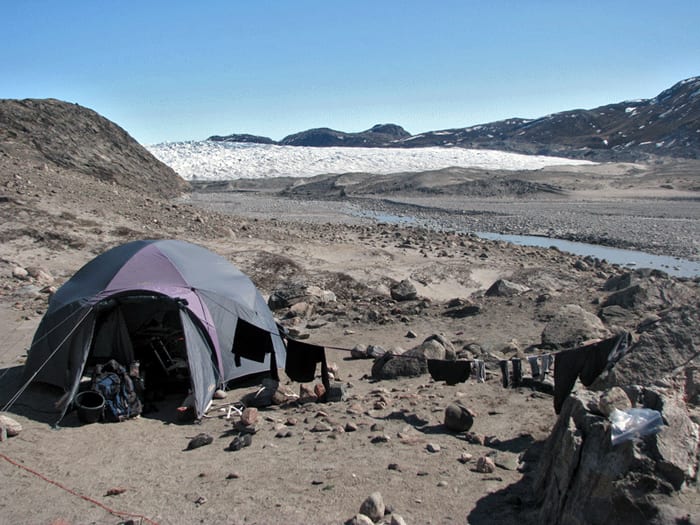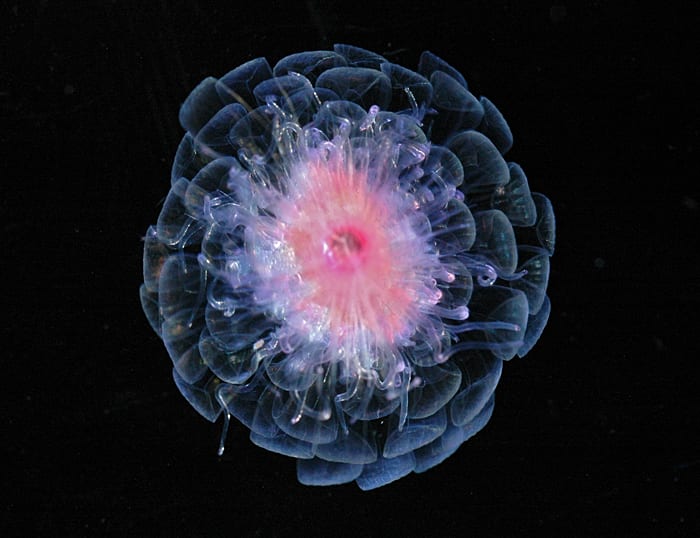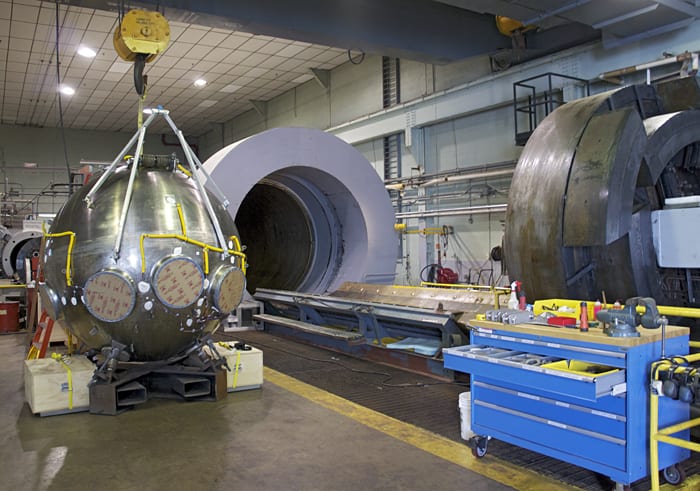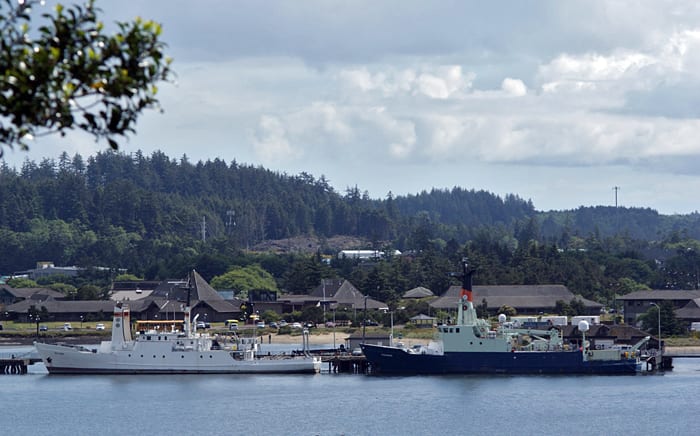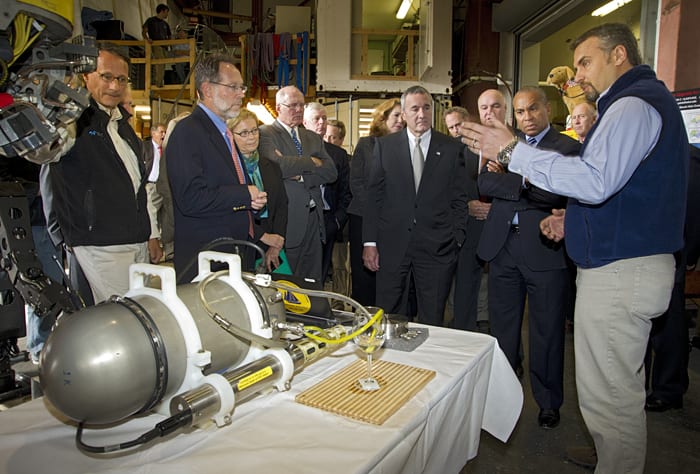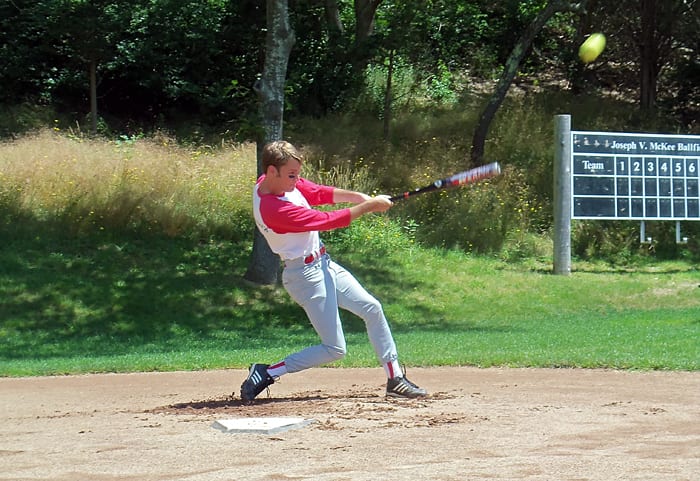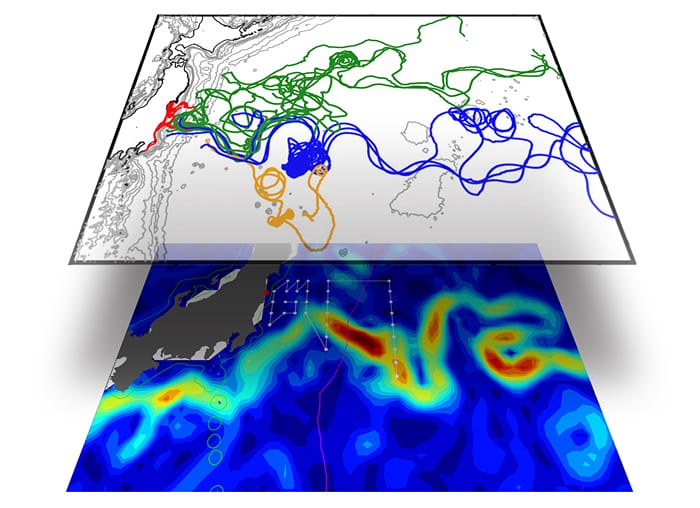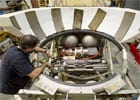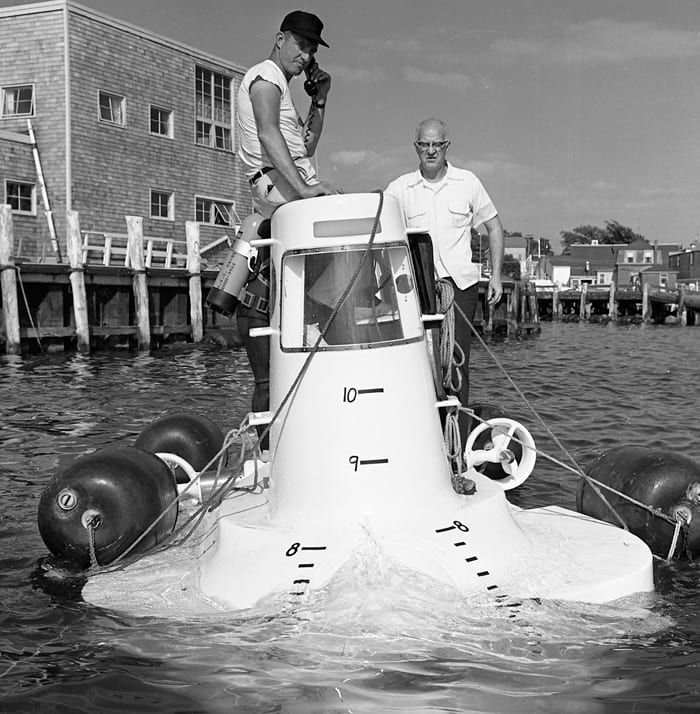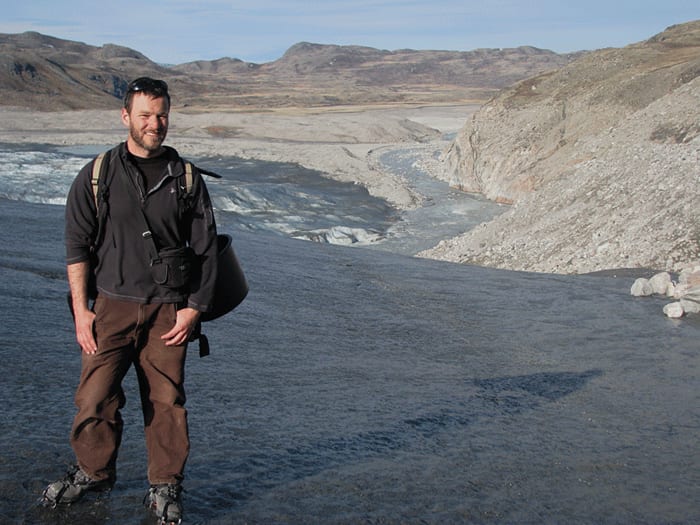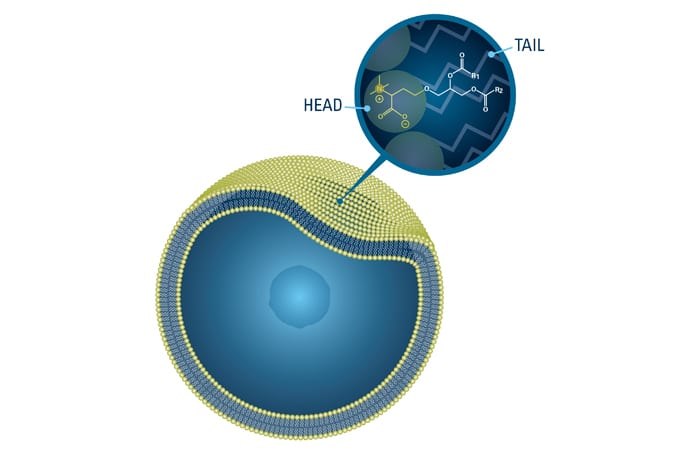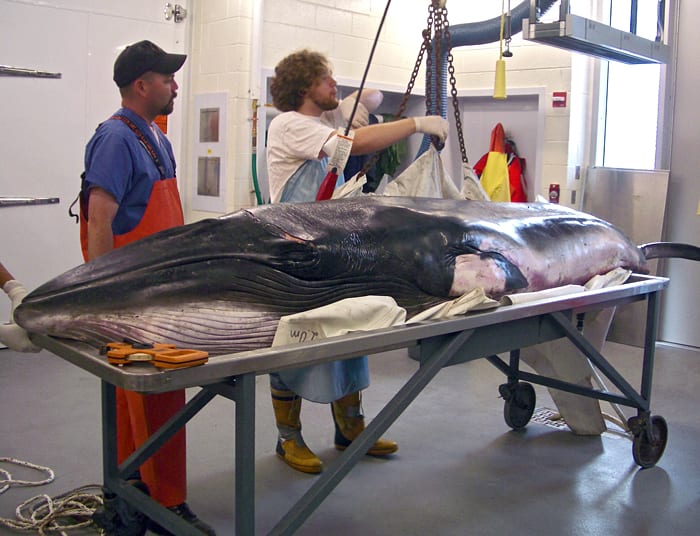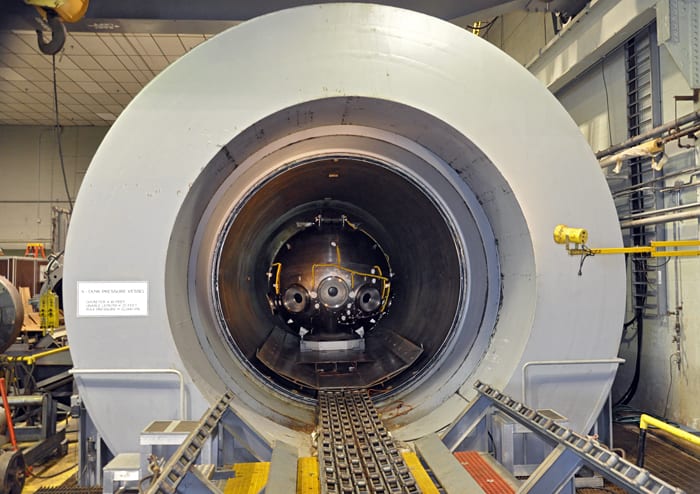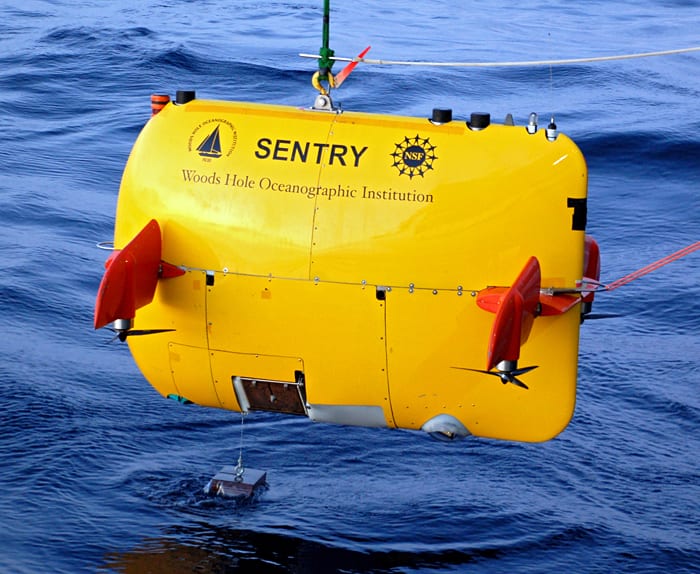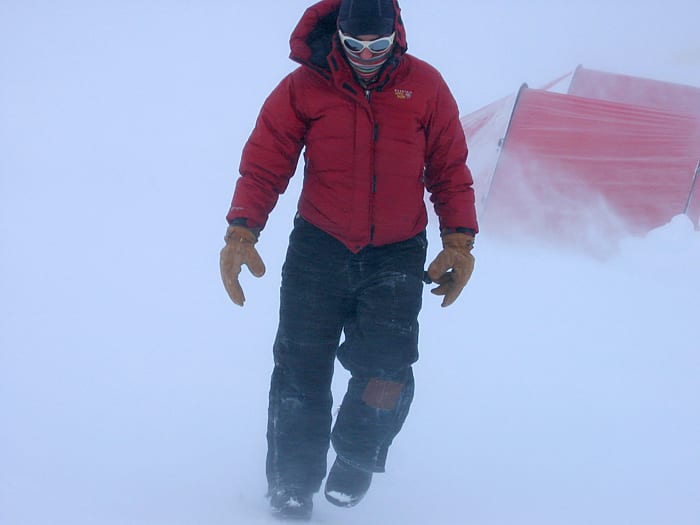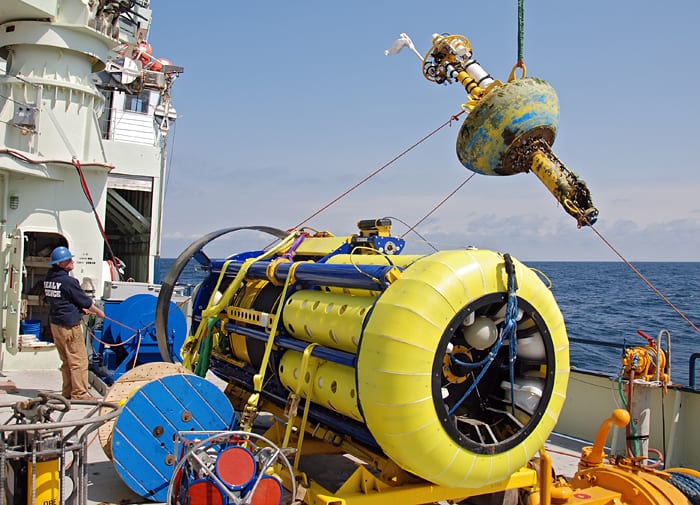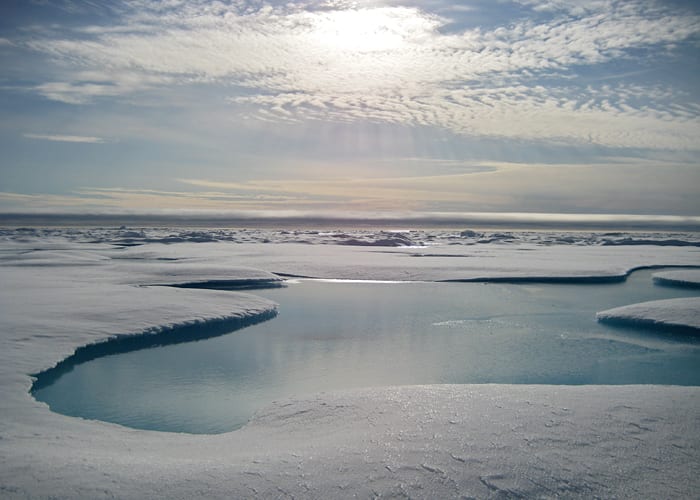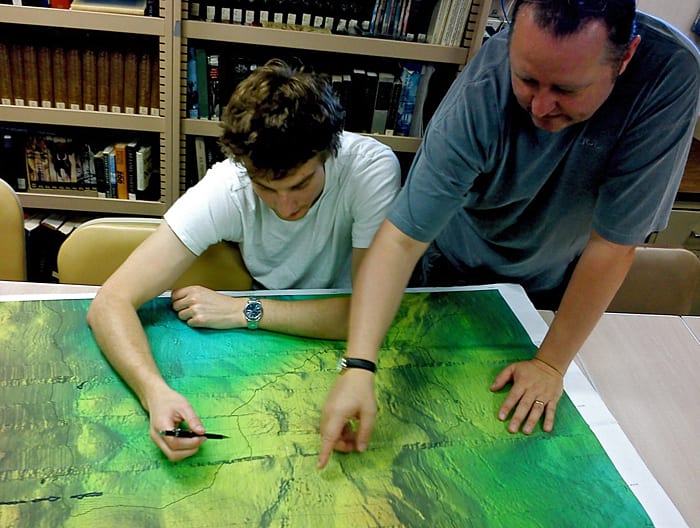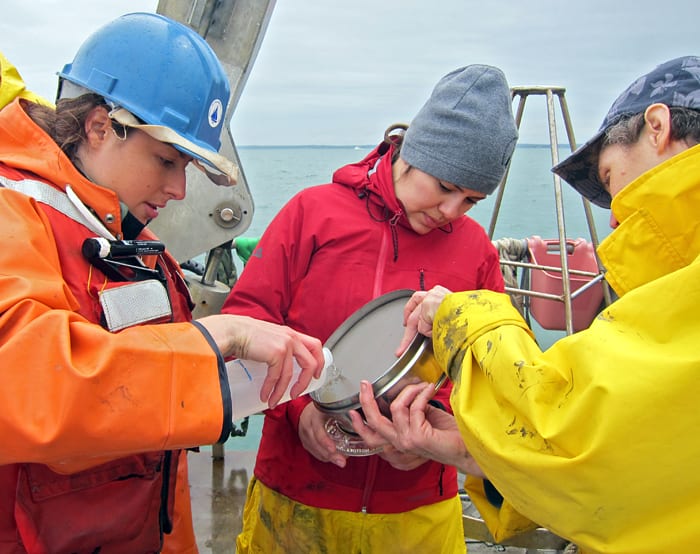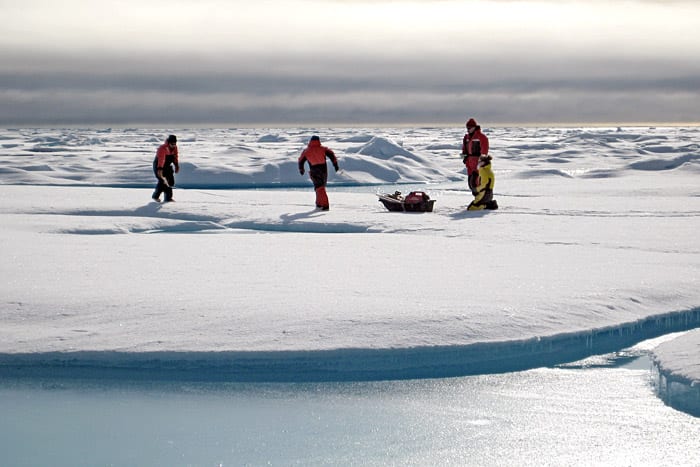Multimedia Items
Roughing It, Greenland Style
Until early August, this is Ben Linhoff’s home in Greenland. Linhoff is a second-year graduate student in the MIT/WHOI Joint Program and is spending his second summer studying Leverett Glacier…
Read MoreBy the Siphonophore’s Red Glare
Happy Independence Day from WHOI and Athorybia rosacea, a siphonophore collected on a Census of Marine Zooplankton cruise off the U.S. East Coast. (Photo by Larry Madin, Woods Hole Oceanographic Institution)
Read MoreLet Construction Begin
With the completion of a new personnel sphere, the submersible Alvin is on the way to becoming a stronger, roomier, and more capable research submersible. After two years of design, construction,…
Read MoreTwin Sisters
Despite some differences in appearance, these are actually sister ships. R/V Wecoma (left) and R/V Oceanus are both operated by Oregon State University on behalf of the University-National Oceanographic Laboratory…
Read MoreGovernor Patrick Visits WHOI
Last Fall, Massachusetts Governor Deval Patrick visited WHOI for the first time, touring several labs and learning about the Institution’s robotic vehicle development and ocean observing programs. Here WHOI Associate Scientist…
Read MorePower-hitting Microbiologist
Summer brings catching chemists, fielding physicists, and batting biologists—like Louie Wurch (here), to McKee Field at Woods Hole Oceanographic Institution to play in the long-running WHOI softball league. Since 2007,…
Read MoreOn a Clear Day
Technician Scott Hiller tends to a buoy in the Bering Sea during a 2009 Polar Discovery expedition. Buoys sit atop a long chain of instruments that monitor ocean conditions, and…
Read MorePacific Highway
An international scientific team led by WHOI marine chemist Ken Buesseler completed a research cruise in June 2011 to assess the levels and dispersion of radioactive substances from the Fukushima…
Read MoreRebuilding Alvin
The Original Alvin
A new titanium personnel sphere for the submersible Alvin passed pressure tests last week and is scheduled to arrive tomorrow in Woods Hole, where the newest incarnation of Alvin will…
Read MoreHappy Camper
In May, Ben Linhoff landed in Greenland, where he’ll remain until early August, camping and studying the ice sheet for his research on glaciers and chemical oceanography. It’s his second…
Read MoreDrilling Down
Every year since 2003, researchers have traveled to the Arctic north of Alaska aboard the Canadian icebreaker Louis S. St. Laurent for a month to study the Beaufort Gyre. In…
Read MoreHeads and Tails
The cell membranes of single-celled marine life are mostly made of fatty compounds called lipids. They have a distinctive structure with hydrophilic (water-loving) “heads” and hydrophobic (water-avoiding) “tails” and are…
Read MoreA Weighty Specimen
A minke whale that died and stranded on a beach is received at WHOI’s Marine Mammal Center , where research assistant Scott Cramer (left) and former WHOI employee Ben Carr…
Read MoreHigh-pressure Situation
The new personnel sphere for the re-designed submersible Alvin enters a pressure test chamber at a Northrop-Grumman facility in Annapolis, Md. The sphere began four days of simulated test dives on…
Read MoreMarine Workhorse
The crew aboard the research vessel Atlantis launched the autonomous underwater vehicle Sentry during a September 2009 cruise to study natural oil and methane seeps about one mile off the…
Read MoreHappy Summer!
Yes, this is summer—austral summer—in Antarctica, where the air conditioning is natural. WHOI glaciologist Sarah Das and MIT/WHOI Joint Program graduate student Ali Criscitiello, shown here, conducted research on the…
Read MoreThe Mooring the Merrier
John Kemp, head of at-sea operations for the WHOI Mooring Operations, Engineering, and Field Support Group recovers a Submersible Surface Buoy to the crowded deck of the research vessel Knorr…
Read MoreDeep End of the Pool
“Carbon is the currency of life,” says David Griffith, a student in the MIT/WHOI Joint Program and lead author of a recent study to measure levels of carbon in the Arctic Ocean from…
Read MoreHome Turf
Scientists who visit the Arctic sometimes see the region’s most famed inhabitants: polar bears. Photographer Chris Linder saw this mother and cub from the Swedish ice breaker Oden during a…
Read MoreA Plan of Action
WHOI marine geochemist Chris German (right) and doctoral student Matt Hodgkinson of the National Oceanography Centre in England study a map of the seafloor from the Mid-Cayman Rise, an undersea…
Read MoreSurprises from Below
This spring, first-year students in the MIT/WHOI Joint Program who enrolled in the introductory course in biological oceanography had the opportunity to participate in a field exercise on R/V Tioga.…
Read MoreSculpture and Science
Sculptor Cornelia Kubler Kavanagh‘s concern for water and the ocean inspires her work. For “The Pteropod Project: Charismatic Microfauna,” she collaborated with WHOI biologist Gareth Lawson, who studies these animals,…
Read MoreCarbon on Ice
A team of researchers sample ice and snow from an ice floe in the Canada Basin, an area northwest of the Canadian coast, during a 2008 expedition to measure carbon…
Read More
